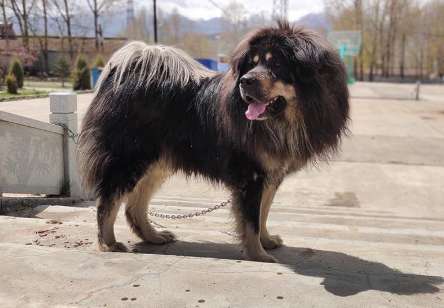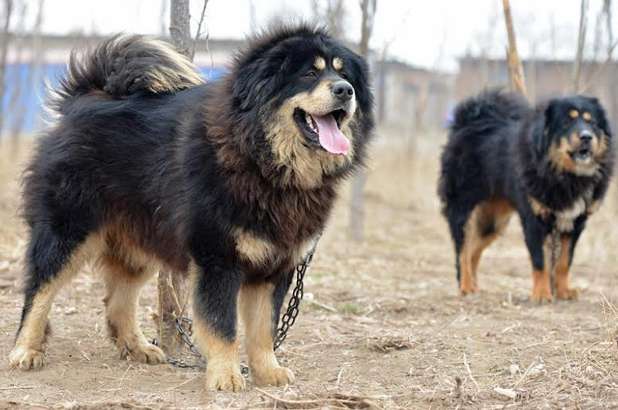Among all the dog breeds in our country, the Tibetan Mastiff is the most well-known. This is a dog breed native to the Qinghai-Tibet Plateau. In the 1990s and early 21st century, it was favored by a large number of Chinese people. At that time, the price of the Tibetan Mastiff was extremely high, and even sold for a million dollars, making it a veritable "million-dollar pet".
In fact, the Tibetan Mastiff was only popular among niche circles such as herdsmen in the early days. In the 1980s, due to its domineering appearance and fierce personality, it became popular abroad and was sought after by a large number of foreigners. After the 1990s, this craze spread back to China, causing a wave of "Tibetan Mastiff fever."

At its peak, many people were proud to own a Tibetan Mastiff, but the outcome was predictable. After 2013, the Tibetan Mastiff bubble burst and word-of-mouth collapsed, causing people's evaluation of Tibetan Mastiffs to change from praise to disparagement.
In fact, Tibetan Mastiffs are not suitable for breeding in low-altitude areas at all. As a plateau dog breed and a large and fierce dog, their real advantages are on the plateau. This can be seen from a recent video You can see it in .
The two Tibetan mastiffs in the picture are not afraid of heavy snowstorms. In the weather of minus 40 degrees, they still stick to the sheepfold, leaning against the fence, using the ground as their bed and the heavy snow as their blanket, curled up The body sleeps.
In this environment, other dogs have long been unable to bear it, but the Tibetan Mastiff can still stick to its post, which shows its adaptability in the cold environment. So how did such an excellent plateau dog breed come into being?

About the birth of the Tibetan Mastiff, there are many mythical theories circulating on the Internet. For example, "Ten dogs produce a mastiff" says: Herders will lock all the newly born puppies in a small room and not provide them with any food. In this way, driven by hunger, the puppies will fight each other.The last remaining most ferocious and powerful puppy is the Tibetan Mastiff.
Of course, this statement is just people's imagination. In fact, there were no dogs on the Qinghai-Tibet Plateau in the early days, let alone Tibetan mastiffs. They were brought in by early human immigrants. As early humans entered the Qinghai-Tibet Plateau, the dogs were basically low-altitude dog breeds. Like most dogs, they did not have the ability to survive on the plateau.
We have observed that today’s Tibetan Mastiffs are completely different from many low-altitude dog breeds in appearance. They have thick hair and huge bodies, like lions. This is why they were originally favored by foreigners. The main reason for the popularity.
The changes in Tibetan Mastiffs are adaptations to changes in the environment. After their ancestors entered the Qinghai-Tibet Plateau, they continued to multiply and their numbers increased. Some dogs began to come into contact with the local wild Tibetan wolves.
We all know that dogs were domesticated from some gray wolves in the late Pleistocene, and there is no reproductive isolation from wolves, so naturally, some dogs and wolves came together.

Hybridization with ancient Tibetan wolves is the fundamental reason why future generations of Tibetan mastiffs acquire the ability to adapt to plateaus. As we all know, animals such as snow leopards and rabbit cats can survive for long periods of time in high-cold and hypoxic environments and have high athletic abilities. In order to figure out the reason, scientists conducted a lot of research and finally discovered a gene called "EPAS1".
This gene has been detected in many high-altitude species such as snow leopards, rabbit cats, and Tibetan foxes, but not in low-altitude species such as gray wolves, domestic dogs, and golden-backed jackals.
Research has found that the EPAS1 gene can affect the regulatory mechanism of hemoglobin production in animals, making the body very sensitive to changes in oxygen and able to survive for a long time even in a hypoxic environment.
Mating with Tibetan wolves has caused the EPAS1 gene to be inherited in the offspring dogs. Coupled with living in a cold environment for a long time, the appearance of these dogs has gradually undergone adaptive changes. For example, becoming gigantic, having thick hair, thickening fat, etc. will help them adapt to the environment.
Dogs and wolves separated a long time ago, and the two evolved in different directions, but later they intersected again by chance.
Scientists constructed a phylogenetic tree of canines based on the region where the EPAS1 gene is located, and found that it was most likely that the ancestors of Tibetan mastiffs existed 24,000 years ago.Already started to get close to the in-laws with Zanglang.
History has proven that the Tibetan Mastiff is the best shepherd dog on the plateau, and it is also a fierce dog that is no less than a beast. With their outstanding abilities, they have left a strong mark in the history of herdsmen. Known as the "Snowy Divine Dog".
In the early days, people on the Qinghai-Tibet Plateau basically lived a nomadic life. As the saying goes, food is the most important thing for the people, and cattle and sheep are the livelihood of the herdsmen. Although there are no tigers on the Qinghai-Tibet Plateau, there is no shortage of ferocious beasts, such as snow leopards, lynxes, brown bears, gray wolves, etc., which will attack cattle and sheep from time to time and prey on livestock, causing huge losses to herdsmen and making people unbearable.
The role of Tibetan mastiffs is reflected in this. They are large in size, ferocious in character, and fearless of beasts, bringing a great sense of security to the herdsmen.
The strength of the Tibetan Mastiff is undoubted. Perhaps "one mastiff fighting three wolves" is a bit exaggerated, but if there are three or five Tibetan Mastiffs guarding the sheep, the beasts will basically not dare to approach.
As for the strength of Tibetan Mastiff, it may be possible to see it from some stray Tibetan Mastiffs. Since the "Tibetan Mastiff fever" subsided, a large number of Tibetan Mastiffs have been abandoned in the wild, forming a huge group of wandering Tibetan Mastiffs.
In 2016, a scholar from Beijing photographed a group of wandering mastiffs on the plateau, led by the Mastiff King, chasing blue sheep and competing with snow leopards for food. We even captured the rare scene of 6 Tibetan Mastiffs forcing off a brown bear. These deeds are enough to prove how strong the Tibetan Mastiffs are.
Tibetan Mastiffs are indeed rare and excellent dog breeds. Just as they can still stick to their posts in heavy snowstorms, Tibetan Mastiffs are praised for their loyalty and bravery. However, there are also environmental restrictions. Once they "enter the homes of ordinary people" and live in low-altitude areas, they will show many discomforts.
On the plateau they are ferocious and can deal with jackals, but in cities they are ferocious but not suitable for domestication. At the same time, hot environments will also increase the burden on Tibetan mastiffs, making them more susceptible to illness.